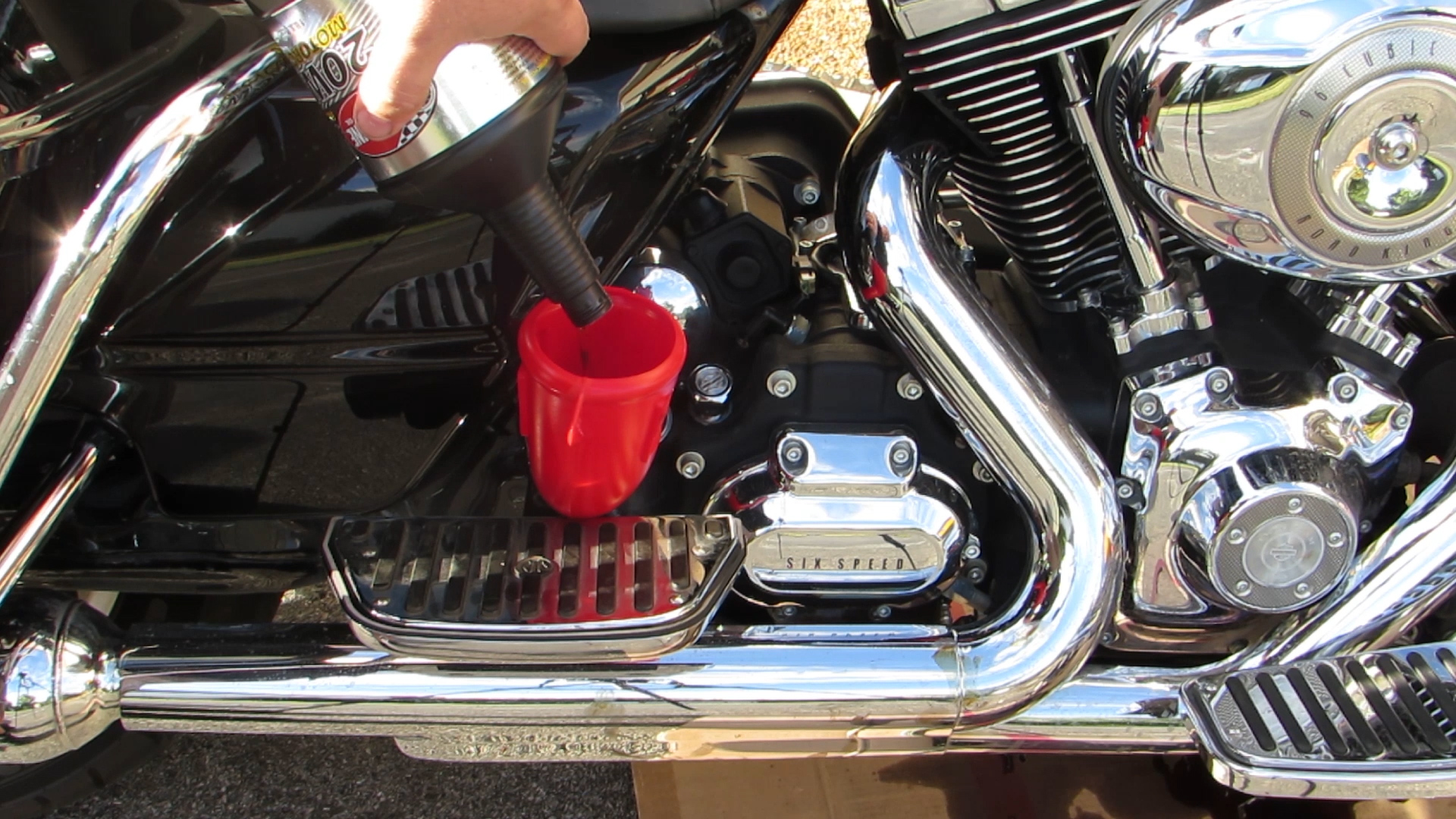Not sure about the frequency of motorcycle oil changes? Discover the answer to that question and more, including the importance of using the right oil. Replacing your motorcycle’s engine oil at regular intervals is one of the most critical maintenance procedures you can perform. In fact, it’s even more consequential than changing your car’s oil.

Motorcycle oil serves several functions, including lubricating moving parts, protecting the engine from moisture and contaminants, and cooling the engine and transmission. Unlike cars, most motorcycles use oil for engine and transmission cooling instead of automatic transmission fluid.
Unfortunately, oil eventually breaks down and accumulates contaminants and moisture, which can lead to engine and transmission damage, impaired performance, and reduced fuel economy. That’s why it’s essential to maintain the integrity of your motorcycle oil by changing it regularly and using the right type of oil.
There are three main types of motorcycle oil: mineral, synthetic, and semi-synthetic. Mineral oil is the cheapest and made from refined crude oil, but it breaks down more quickly and requires more frequent replacement than synthetic oils, which are more expensive but offer greater engine protection. Semi-synthetic oils are a hybrid of mineral and synthetic oils and offer an excellent compromise between longevity and affordability.
Choosing the correct oil for your motorcycle is critical due to its multi-functional nature. The manufacturer-recommended type, which is found in the user manual, should include the following information: whether synthetic or mineral oil is required, the viscosity grade or “weight” (most commonly 10W-40), the American Petroleum Institute (API) classification (a two-letter code ranging from SA to SN indicating oil lubrication and additive properties), and the Japanese Automotive Standards Organization (JASO) classification (a two-letter code indicating the friction modifier’s characteristics that can impact clutch performance). For most motorcycles with a manual transmission with a wet clutch, a JASCO rating of MA is recommended, while motorcycles with automatic transmissions should use oil with a JASCO rating of MB. Always consult the user manual for the manufacturer’s recommended oil and oil change intervals.
How Frequently Should Motorcycle Oil be Changed?
The type of oil used, the number of miles driven, and the frequency of use determine how often motorcycle oil should be changed. The user manual provides the recommended service intervals, but the following general guidelines apply: Mineral oil should be replaced every 2,000 to 3,000 miles, or at least once a year; synthetic oil should be replaced every 7,000 to 10,000 miles, or at least once a year; semi-synthetic oil should be replaced every 5,000 to 6,000 miles, or at least once a year. If you don’t ride your motorcycle frequently, or if you take short trips under 30 minutes, you may need to replace your oil at more regular intervals since an engine requires regular driving to burn off any moisture that has accumulated in the oil. This excess moisture can lead to accelerated oil degradation and engine corrosion. If you can’t ride your motorcycle for 30 minutes every one to two weeks, as is typical during winter, it is recommended to replace your oil every four months.